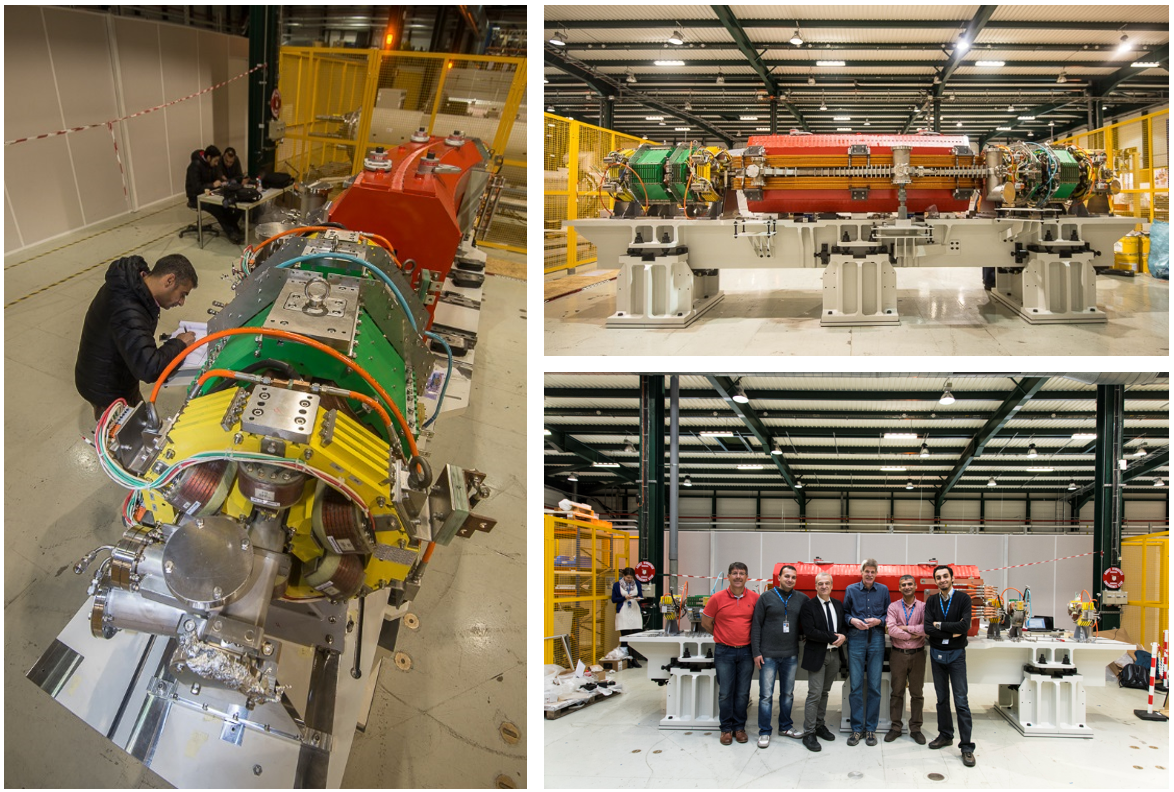
LEFT PHOTO: Maher Shehab at work on assembly of the cell
UPPER RIGHT PHOTO: The complete cell of the storage ring
LOWER RIGHT PHOTO: Part of the CERN and SESAME team having assembled the cell (from left to right) Carlos Lopez, Thaer Abu-Hanieh, Davide Tommasini, Erhard Huttel, Maher Shehab and Mohammad AL-Najdawi
At CERN in Geneva from Friday, 27 March, members of the CERN team leading work on construction of the magnetic system for SESAME’s brand new storage ring (the heart of the facility), together with some members of SESAME’s technical team, successfully assembled and tested one cell of the storage ring with the prototypes of the equipment that forms such a cell – i.e. the magnets (dipole, quadrupoles and sextupoles), vacuum chamber and girder. SESAME’s storage ring will consist of 16 such cells. The purpose of this exercise was to check that all the prototypes fit into each other well and to test the cell.
Taking part in the assembly and the work leading up to it on the CERN side were engineers/technicians of the CESSAMag (CERN-EC Support for SESAME Magnets) team. On SESAME’s side it was the Centre’s Technical Director (Erhard Huttel), the head of the Mechanical Engineering Group (Maher Shehab), the former head of the Vacuum and Cooling Group (Firas Makahleh), the magnet engineer (Mohammed Ebbeni), the front-end vacuum engineer (Mohammad Al-Najdawi) and the alignment engineer (Thaer Abu-Hanieh).
Other than a few modifications that need to be made to the girders, all the prototypes were found to be fully up to expectations, and final delivery of all the equipment is expected to be according to schedule.
Through an agreement signed in May 2013 between the European Commission and CERN, the European Commission provided €5 million, and CERN the expert manpower working with SESAME, to supply the magnets for SESAME’s storage ring and its powering scheme. CELLS-ALBA has helped with tests and magnetic measurements of the dipoles. CERN has procured parts of the magnetic system in some of the SESAME Members and in certain cases this is promoting knowledge transfer. The coils for the quadrupoles were produced in Turkey, and the sextupole magnets are being produced in Cyprus and Pakistan. Israel is producing the power supplies for the quadrupoles and sextupoles. In addition, Iran, Pakistan and Turkey have provided CERN with personnel in the form of in-kind support. (more)

